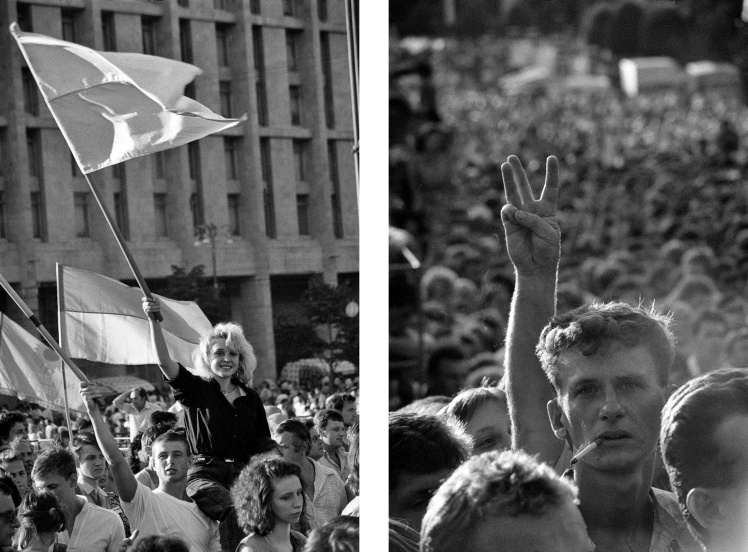In the late 1980s, the economic and political crisis intensified in the USSR. This led to the "parade of sovereignties" in 1990. Declarations of independence and sovereignty were announced by the Baltic, Asian and Transcaucasian republics, as well as Moldova and Russia (at that time the RSFSR).
In the same year, a new era of Ukrainian state independence began — on July 16, 1990, the Verkhovna Rada of the Ukrainian SSR adopted the Declaration on State Sovereignty of Ukraine by an absolute majority of votes (355 MPs in favor, 4 against). The document consisted of 10 chapters, in which the foundations of the state, political, and economic order were prescribed in detail, independence and sovereignty were emphasized.
On the same day, the Verkhovna Rada decided "to consider July 16 as the Day of Proclamation of Independence of Ukraine and to annually celebrate it as a public national holiday of Ukraine."
March on Khreschatyk Street in honor of the Independence Day on July 16, 1991.
The main provisions of the Declaration on Sovereignty, adopted on July 16, 1990:
inviolability of the territory within the existing borders of the Ukrainian SSR;
the republican form of statehood, the only source of power is the people, and only the Verkhovna Rada (the Ukrainian Parliament) can speak on its behalf;
the supremacy in its territory of its own laws and the Constitution (the Declaration was supposed to become the basis for the new Constitution); own citizenship;
the right to own, use and dispose of national and natural resources on its territory; own banking, price, financial, customs and tax systems, the state budget and, if necessary, its own currency;
own Armed Forces, internal troops, state security agencies; the obligation not to spread, not to manufacture and not to build up nuclear weapons;
independent international relations with other states;
relations with other Soviet republics based on agreements concluded on the principles of equality, mutual respect and non-interference in internal affairs.
Before the first anniversary of the Declaration of Sovereignty, on July 16, 1991, mass events dedicated to the Independence Day of Ukraine took place in Kyiv. The party leadership ceremoniously laid flowers at the monuments to Lenin, in the absence of other rituals. And then a meeting was held in the "Ukraine" palace, where the then chairman of the Verkhovna Rada Leonid Kravchuk said: "Today we gathered for the first time in our history to celebrate the Independence Day. We walked to this day with difficulty, following the call of the heart, following the voice of public conscience and national duty, with great and holy faith in our people, in their right to freedom and independence. And this day has come."
March on Khreschatyk Street in honor of the Independence Day on July 16, 1991.
Thousands marched through Khreschatyk Street — with blue and yellow flags and in national clothes. And in the evening, a concert of Ukrainian bands and performers was held on October Revolution Square (now Independance Square [“Maidan Nezalezhnosti”]). Its culmination was the performance of the Lviv rock band "Braty Hadiukiny" and a festive salute.
The scene on October Revolution Square (now Independence Square) during the Independence Day celebration on July 16, 1991.
A member of the duet "Braty Hadiukiny" at a concert in honor of the Independence Day on July 16, 1991.
Three days after the suppression of the 1991 putsch, on August 24, at an extraordinary meeting, the Verkhovna Rada of the Ukrainian SSR actually proclaimed Ukraineʼs independence for the second time. The date of Independence Day was moved up from July 16 to August 24 by a resolution of the Verkhovna Rada on February 20, 1992.
To keep Babel independent, support us: 🔸 Buy Me a Coffee, 🔸 Patreon, 🔸 PayPal: [email protected].

